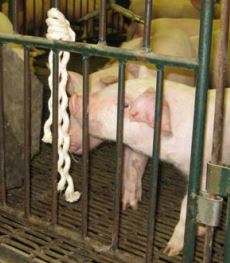



Diagnostics Critical in New Norm of Emerging Swine Diseases
ANALYSIS - Diagnostics are the most critical element in detecting and differentiating emerging diseases from endemic or already occurring domestic disease, writes Sarah Mikesell."We live in an era where I believe the new norm is emerging disease, and it's a global change in part due to population increase, global trade and the like," said Matt Cochran, DVM and program director for AgConnect which is part of the Institute for Infectious Animal Diseases, a Department of Homeland Security Science and Technology Center of Excellence. "Diagnostic assays are a part of the solution, having faster, better, more refined diagnostics, and perhaps changing the level at which they are able to be delivered to a farm, a producer, a veterinarian, and refining techniques."

Over the last 10 years, oral fluid PCR or pooled PCR techniques have made great steps forward, and Dr. Cochran expects to see more diagnostic advancements in the future.
"I work from a systems approach to detect disease before people would normally recognize it for something different. We've got to get to where we can see it and detect it before we would normally know through normal observance and practices that it's come and it's there," he said.
The American swine industry has been ravaged by porcine epidemic diarrhea virus (PEDv) and now is facing an outbreak of Seneca Valley Virus, noted Dr. Cochran. Emerging diseases pose different problems for different reasons. Differentiation of Seneca Valley from other vesicular diseases can be an issue.
"Part of the program we work with is enhanced passive surveillance, which incorporates field-ready technologies to allow veterinarians and/or producers or production technicians to make documentation on a syndromic level in the field and create real-time data streams that feed up into an aggregated database for viewing and then decision making later," Dr. Cochran said.
"There's a lot of everyday practicality to this, but using syndromes, even aside from presumptive diagnosis, can be very useful and provide that early warning. Diagnostics are still a big part of this; we loop diagnostics back to that in this particular program."
Diagnostics provide confirmation and differentiation. They're the rock solid evidence at the end of the day with the inputs coming a little bit before that through the live data stream.
"Then diagnostics are collected, sent to a laboratory in most cases, and the results can be messaged back directly and provide a continuity in that record, so there's no need to try to marry up the data later," said Dr. Cochran.
To learn more at the Swine Diagnostic and Disease Resource Center, click here.









